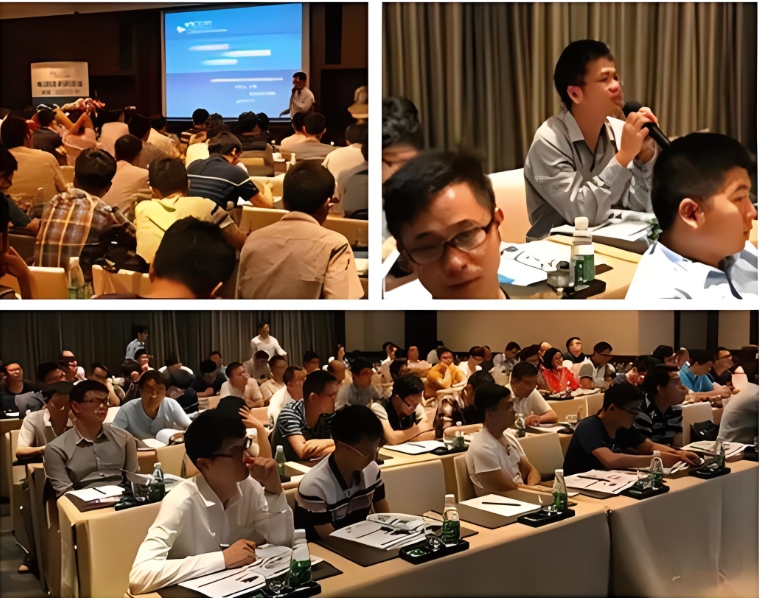
Since its launch in 1977, the Power Supply Design Seminar (PSDS) series has provided rich technical and practical introductions, integrating new advanced power supply concepts, basic design principles, and practical application examples. The topics introduced in this seminar are worth paying attention to for professionals at all levels.

Power Supply Design Seminar
Location and date (you can choose to attend at the nearest location)
●Crowne Plaza Beijing Zhongguancun: March 12, 2024
●Shanghai Pudong Kerry Hotel: March 14, 2024
●Shenzhen OCT Intercontinental Hotel: March 19, 2024
Meeting agenda
Topic and Description
GaN optimized conversion mode power factor correction
This topic will introduce gallium nitride (GaN) optimized power factor correction (PFC) topology and control methods for achieving high-performance, high-density, and cost-effective PFC. By adopting a new zero voltage detection circuit and algorithm, it is possible to enhance zero voltage switching and reduce total harmonic distortion (THD) throughout the entire line cycle and load range. A 5kW prototype with a power density of 120W/in3 and THD below 6% can be used as a conceptual validation to demonstrate an ideal control method for startup, transient response, and AC voltage drop.
Revealing the Electrical Gap and Creepage Distance of High Voltage Terminal Equipment
To achieve the highest possible power density while adhering to safety and design guidelines, we need to be more cautious in selecting high-voltage printed circuit board spacing and integrated circuit packaging. This topic will summarize the precautions for common terminal devices and provide a quick reference table, including telecommunications, servers, and wireless infrastructure; Motor drivers, photovoltaic inverters, and charging piles; Consumer AC/DC applications, as well as electric vehicles and hybrid electric vehicles.
Introduction to Cross Inductance Voltage Stabilizer (TLVR)
The cross inductance voltage regulator (TLVR) topology launched in 2019 has achieved significant improvements in transient response, power density, and solution cost compared to traditional multiphase buck voltage regulator topologies (in the design examples in this topic, capacitors have been reduced by more than 40%). This topic will cover the working principle of TLVR topology, performance and cost improvements compared to traditional regulators, design formulas, and related guidelines.
Basic knowledge of phase-shifting full bridge converters
Phase shifted full bridge converters (PSFBs) are common in high-performance power supplies, with characteristics such as fast transient response, high power density, and high converter efficiency. This topic will review the working principle of PSFB, its characteristics, different types of rectifiers, clamp options, converter control modes, synchronous rectifier operating modes, and light load management options. The design of PSFB based on the basic specification of modular hardware system universal redundant power supply demonstrates the ability of PSFB to have active clamping circuits and achieve high-power design with high transient response.
Tips, Techniques, and Advanced Applications of Linear Regulators
This topic will explore some common tips and techniques to help improve the performance of low voltage drop regulators (LDOs) as much as possible, and introduce how to improve noise, power suppression ratio, heat dissipation, and system efficiency. We will also discuss more complex topics, such as parallel LDO, including novel materials for multi input single output LDO design. This topic is valuable for anyone who wants to fully improve LDO design or system efficiency.
Creating a primary side regulation flyback converter using a traditional boost controller
Primary side regulation (PSR) eliminates the need for optocoupler feedback by detecting the voltage on the primary or auxiliary winding, which can reduce system costs and improve reliability. The flyback controller using integrated advanced feedback circuits designed specifically for primary side induction has been widely used, but PSR type feedback can also be achieved with the help of standard boost controllers. Although this implementation may seem simple, it also has certain considerations. This topic will explain these considerations and identify areas that require trade-offs, including a design example.
Comparison of AC/DC power conversion topologies in three-phase industrial systems
This topic will compare two-stage and three-level AC/DC converters suitable for three-phase industrial applications, focusing on the analysis of two-stage T-type active neutral point clamp (ANPC), neutral point clamp (NPC), and flying capacitor (FC) topologies. The evaluation will include system trade-offs such as efficiency, electromagnetic interference, working principle, power switch selection, and DC link capacitor stress, and discuss the impact of various topologies on the bill of materials.